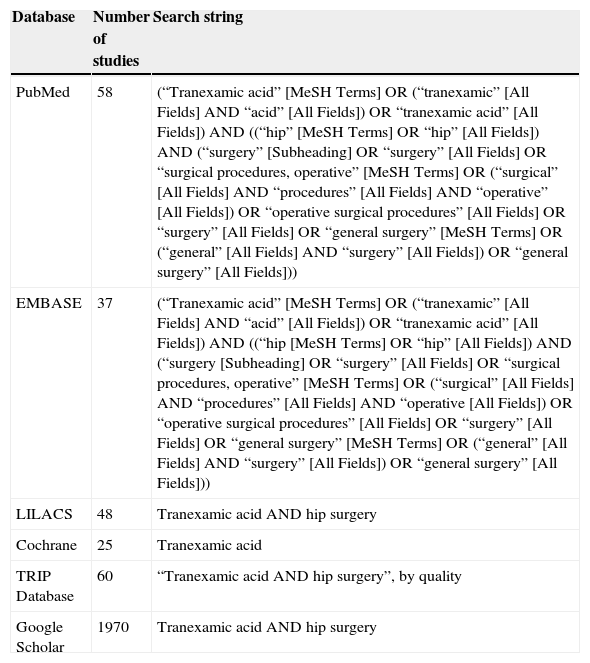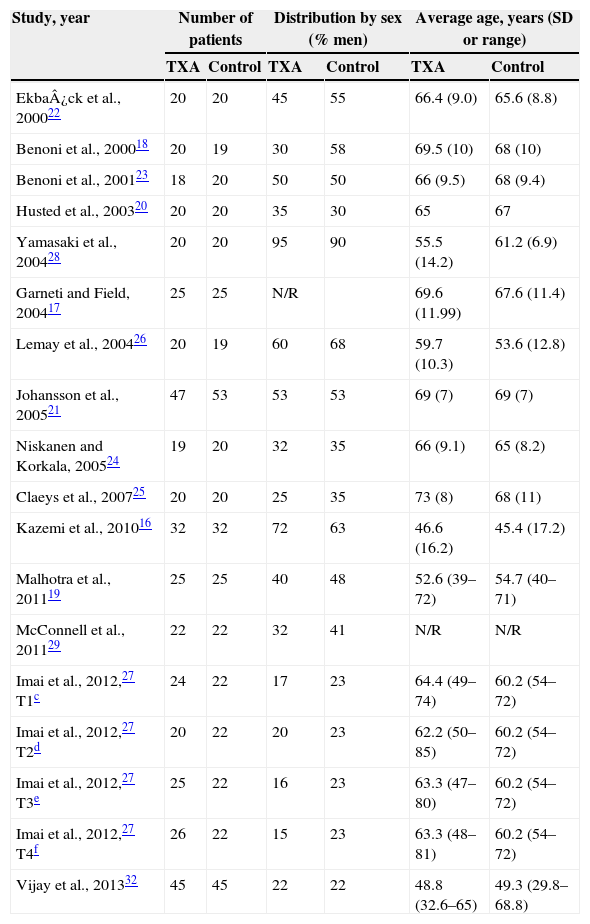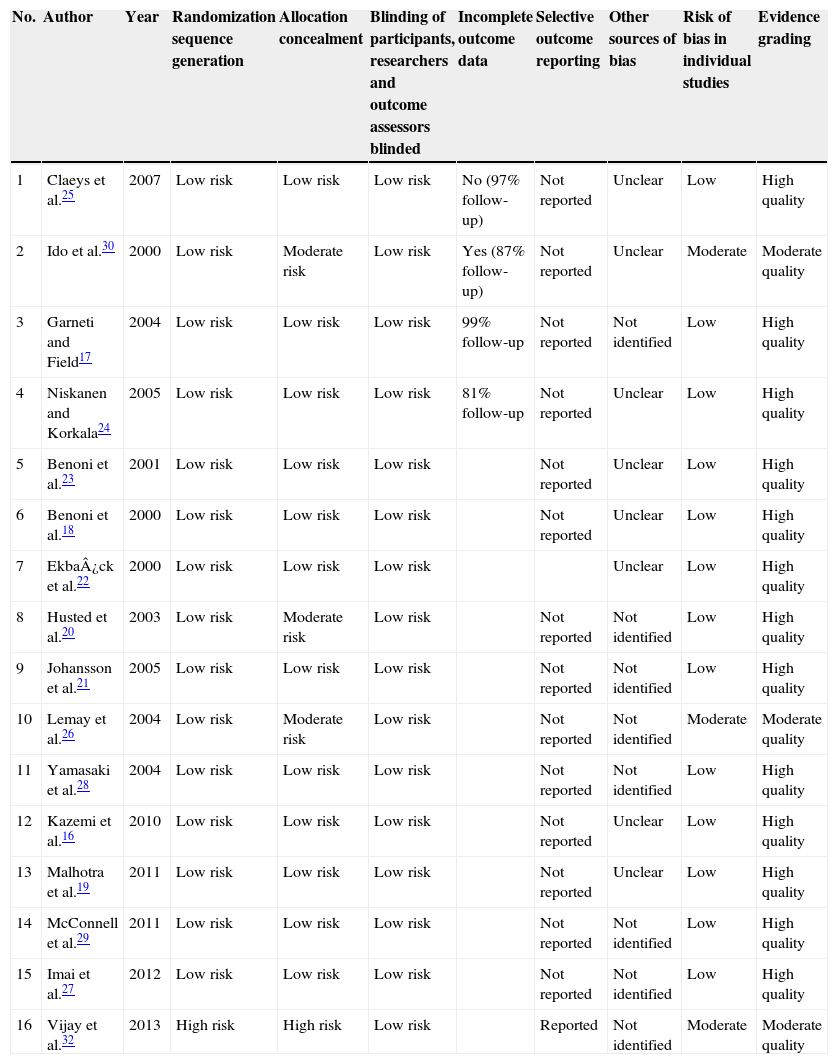Tranexamic acid (TXA) is an antifibrinolytic drug used to reduce bleeding in mortality risk situations such as trauma. Our objective was to conduct a systematic literature review to evaluate the effectiveness and safety of TXA in reducing bleeding in hip arthroplasty.
Materials and methodsA systematic literature review and meta-analysis of primary studies similar to controlled trials was performed. Literature was searched in MEDLINE, Embase, Cochrane, LILACS, SciELO and Google Scholar. The review was proposed and undertaken by two reviewers and the inclusion criteria were: (a) patients undergoing arthroplasty for primary unilateral hip replacement; (b) comparison of a treatment group with TXA to a control group that received a placebo or no treatment at all, and (c) outcome measures, total blood loss, number of patients receiving allogeneic transfusion and/or incidence of thromboembolic complications. The search was restricted to studies published from 1966 to June 2013.
ResultsA total of 16 studies with 246 patients were retrieved for this review. The total blood loss outcome evidenced a weighted mean difference in favor of TXA vs. controls undergoing hip arthroplasty (−0.45 [P<0.001, 95% CI −0.65 to −0.24]). Weighted relative risk was estimated for the allogeneic transfusion requirement outcome, showing a trend in favor the TXA arm, with fewer patients requiring allogeneic transfusion in hip surgery (0.8 [P<0.02, 95% CI 0.57–1.11]); however, this trend was not statistically significant.
LimitationsThere is a noticeable difference in methods for quantifying total blood loss across the studies reviewed. The need for transfusion outcomes is probably not significant taking into account the number of events in the TXA group.
ConclusionsTXA can be routinely used to reduce intra- and post-operative blood loss in primary hip arthroplasty.
El ácido tranexámico (ATX) es un fármaco antifibrinolítico utilizado para la reducción del sangrado en situaciones de riesgo de mortalidad como es el trauma. El objetivo es evaluar la efectividad y seguridad del ATX en la reducción del sangrado operatorio en la artroplastia de cadera mediante una revisión sistemática de la literatura.
Material y métodosSe realizó una revisión sistemática de la literatura y un metaanálisis de estudios primarios tipo ensayos clínicos controlados. La búsqueda de la literatura fue realizada en MEDLINE, Embase, Cochrane, LILACS, SciELO y Google Scholar. La revisión fue propuesta y realizada por 2 revisores y los criterios de inclusión fueron: a) pacientes sometidos a artroplastia de cadera unilateral primaria; b) comparación de un grupo de tratamiento con ATX frente a un grupo de control que recibió un placebo o ningún tratamiento en absoluto; c) las medidas de resultado: pérdida sanguínea total, número de pacientes sometidos a transfusión alogénica y/o incidencia de complicaciones tromboembólicas. La búsqueda de estudios se realizó desde el año 1966 a junio de 2013.
ResultadosUn total de 16 estudios fueron contemplados para esta revisión, con 246 pacientes incluidos. Se evidenció en el desenlace de pérdida sanguínea total un efecto ponderado de diferencia de promedios a favor de TXA vs. control de los pacientes sometidos a artroplastia de cadera (−0.45 [p<0,001, IC 95% −0,65 a −0,24]). Se estimó el riesgo relativo ponderado para el desenlace de requerimiento de transfusión alogénica, el cual evidenció una tendencia a favorecer al brazo de ATX con un número de pacientes que requieren menos transfusión alogénica en cirugía de cadera (0,8 [p<0,02, IC 95% 0,57 a 1,11]), sin embargo, esta tendencia no fue estadísticamente significativa.
LimitacionesExiste una diferencia notable en los métodos de medición para la cuantificación de las pérdidas sanguíneas totales entre los estudios. El desenlace de necesidad de transfusión no es significativo, probablemente por el número de eventos en el grupo de ATX.
ConclusionesEl ATX se puede considerar de uso rutinario en la artroplastia primaria de cadera para reducir la pérdida de sangre intra y posquirúrgica.
















